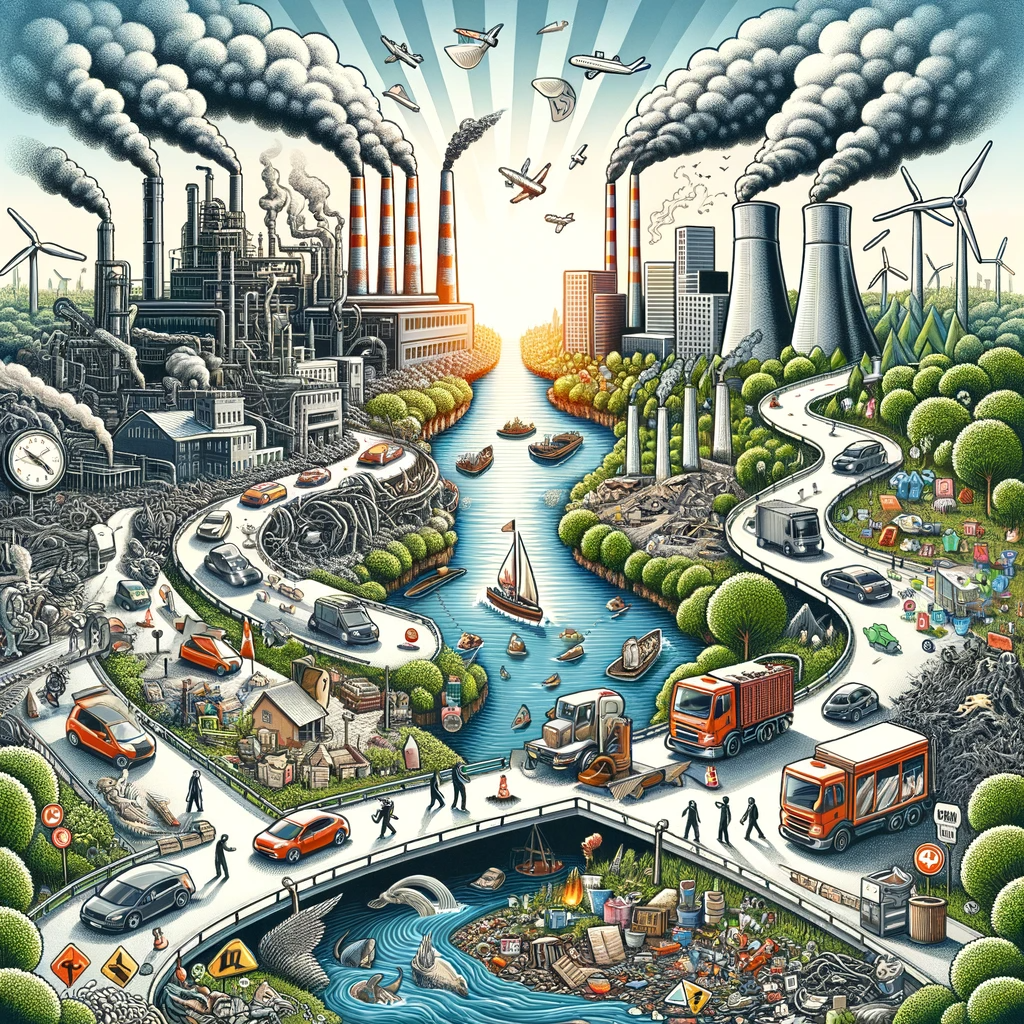

In the quest for sustainability, many companies have committed to achieving net-zero emissions. While the goal is commendable, the path to net-zero is fraught with challenges as you can read in our article about Greenwashing in Architecture. A report by Plan A, as featured on yesilbuyume.org, outlines five significant obstacles that companies face on this journey. Understanding these challenges is crucial for any business striving for a sustainable future.
What are the challenges to reach a sustainable future?

1. The Offsetting Trap
A common initial step for companies is to offset emissions rather than reducing them directly. This approach can create a false sense of progress, leading to complacency in actual emission reduction efforts. Research indicates that such offsetting strategies can paradoxically increase emissions by up to 20%. Companies need to refocus on reducing emissions at the source rather than relying solely on offsetting.
2. The Goal-Setting Dilemma
“Clear and achievable targets” are often missing in corporate sustainability strategies. Without measurable goals, tracking and managing progress becomes challenging. This lack of clarity can demotivate and create ambiguity about the company’s commitment to net-zero. A mere 14% of companies have set specific interim goals, highlighting the need for more concrete planning.
3. Investment Shortfalls to be Sustainable
Sustainability requires significant investment, but many companies fall short in allocating the necessary resources. Inadequate funding slows progress towards net-zero, undermining long-term sustainability efforts. Surprisingly, only 38% of companies with a net-zero goal have increased their sustainability investments, suggesting a gap between intentions and actions.
4. Communicating for Success
Effective communication with stakeholders, including employees and consumers, is essential for achieving sustainability goals. Companies that actively engage their stakeholders are 2.5 times more likely to reach their net-zero targets. A failure to involve key stakeholders in the sustainability conversation can hinder the achievement of these ambitious goals.
5. The Reporting and Monitoring Gap
Accurate monitoring and transparent reporting of sustainability efforts are vital, yet only 38% of companies with net-zero commitments are effectively reporting their progress. This lack of transparency and accountability can erode stakeholder trust and impede the journey towards net-zero.
What about the context in Türkiye?


In Türkiye, the journey towards achieving net-zero emissions involves addressing several significant challenges, as highlighted in the Country Climate and Development Report for Türkiye. Here’s an overview of the 5 challenges and opportunities that Türkiye faces in its path towards net-zero emissions, underscoring the need for strategic and multi-sectoral approaches to combat climate change effectively.
1. Vulnerability to Climate Change
Türkiye’s geographic, climatic, and socioeconomic conditions make it highly susceptible to climate change impacts, including food security issues, increasing water stress, and severe disaster events like forest fires. These vulnerabilities arise from a mix of climate factors, population exposure, and economic factors.
2. Greenhouse Gas Emissions
Despite slower growth in greenhouse gas (GHG) emissions compared to economic growth, Türkiye’s energy sector, which includes power, transport, building, and industrial sectors, is the largest contributor to GHG emissions. The power, transport, and agriculture sectors are less carbon-intensive than the EU average, but coal dependency remains high, creating risks, especially with the potential introduction of the EU’s Carbon Border Adjustment Mechanism (CBAM).
3. Climate Change Commitments
Türkiye ratified the Paris Agreement in October 2021, committing to net-zero emissions by 2053. The country is updating its institutional arrangements and National Climate Change Action Plan to address the intensifying climate-related events and the implications of the EU Green Deal. The war in Ukraine and resultant energy supply disruptions have also emphasized the importance of climate action for energy security and affordability.
4. Resilient Net Zero Pathway (RNZP)
The RNZP aims to align Türkiye’s development and climate objectives by promoting resilience and adaptation across the economy. It involves significant policy changes and actions in various sectors, including deep decarbonization of the power sector, energy efficiency, and carbon sequestration efforts. The RNZP prioritizes adaptation in the private sector, enhancing resilience of public assets and services, and integrating climate risks into macroeconomic and fiscal policies.
5. Economic Benefits of Climate Action
The RNZP anticipates a reduction in emissions from the power sector by 2040, despite rising demand. Türkiye can achieve energy security through investments in renewable energy, energy efficiency, and advanced technologies. The plan also projects economic benefits, including reduced energy imports and expenditure, improved air quality, and overall net gains of $15 billion over 2022-30 and $146 billion over 2022-40.
Achieving net-zero is a strategic necessity for sustainable businesses
Achieving net-zero is not just an environmental imperative but a strategic necessity for businesses. By addressing these five obstacles – shifting from offsetting to reduction, setting clear goals, increasing investments, improving stakeholder communication, and enhancing reporting and monitoring – companies can make significant strides towards a sustainable and profitable future.
